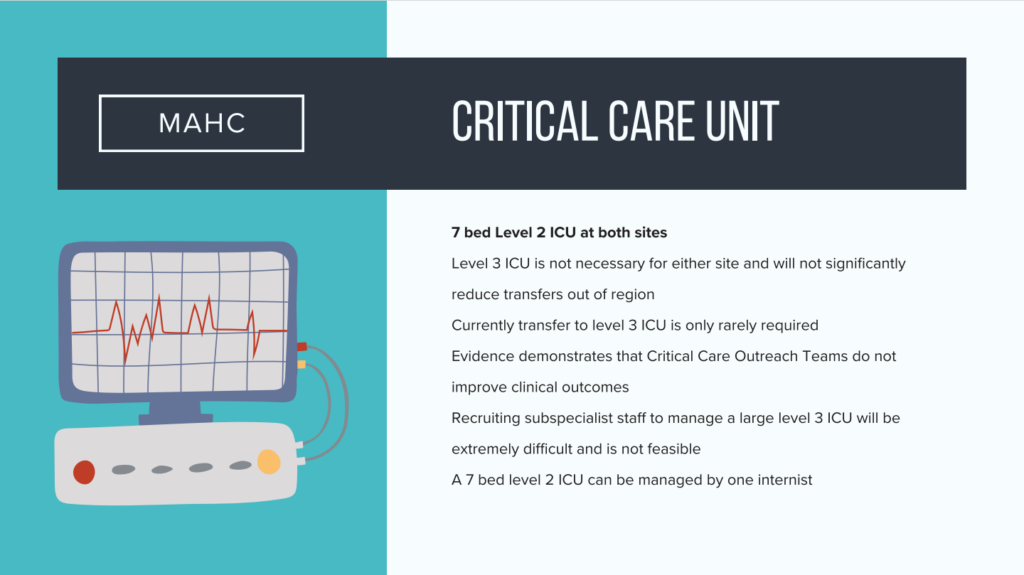
The landscape of healthcare is constantly shifting, presenting both opportunities and challenges for providers and patients alike. As populations age and healthcare needs evolve, organizations are continually evaluating their service models to ensure they are delivering the most effective and efficient care possible. This often involves difficult decisions regarding resource allocation and service prioritization.
One of the key areas undergoing significant transformation is home healthcare. Once a cornerstone of long-term care and post-acute services, home healthcare is now grappling with rising costs, staffing shortages, and evolving patient preferences. This has forced healthcare organizations to reassess their home care offerings and make strategic adjustments to maintain financial stability and ensure high-quality care delivery.
The complexities of managing a home healthcare unit are considerable. From recruiting and retaining qualified nurses and therapists to coordinating schedules and managing logistics, the administrative burden is significant. Furthermore, the regulatory environment for home healthcare is stringent, requiring meticulous documentation and compliance with ever-changing guidelines.
These factors, combined with the increasing demand for alternative care models such as telehealth and specialized outpatient services, have prompted some healthcare providers to re-evaluate their commitment to traditional home healthcare. The decision to alter or discontinue a service is never easy, as it directly impacts patients, employees, and the community as a whole.
The question that lingers in the minds of many is: what are the underlying factors prompting healthcare organizations to make these tough decisions? It’s within this context that we examine the recent news surrounding HealthPartners to close home care unit, a move that is sure to raise questions and spark debate about the future of home healthcare.
Understanding the Decision: HealthPartners to Close Home Care Unit
Financial Pressures and Sustainability
A primary driver behind decisions such as HealthPartners to close home care unit is often financial sustainability. Home healthcare, while valuable, can be expensive to operate. Rising labor costs, coupled with increasingly complex patient needs, can strain an organization’s budget. Reimbursement rates from insurance providers and government programs may not always keep pace with the rising cost of providing care, leading to financial losses.
Furthermore, the administrative overhead associated with home healthcare can be substantial. Coordinating visits, managing staff schedules, and ensuring compliance with regulations require significant resources. Small to medium-sized home care units may struggle to achieve economies of scale, making it difficult to compete with larger, more efficient providers.
Healthcare organizations must constantly assess their financial performance and make strategic decisions to ensure long-term viability. This may involve consolidating services, streamlining operations, or discontinuing programs that are not financially sustainable. While these decisions are never easy, they are often necessary to maintain the overall financial health of the organization and ensure that it can continue to provide essential services to the community.
The challenge for healthcare leaders is to balance financial realities with the needs of patients and the well-being of employees. This requires careful planning, open communication, and a commitment to finding alternative solutions that minimize the impact on those affected by these changes.
In the case of HealthPartners to close home care unit, understanding the financial context is crucial for grasping the rationale behind this difficult decision.
Shifting Patient Preferences and Care Models
Another factor contributing to the evolving landscape of home healthcare is the changing preferences of patients and the rise of alternative care models. While some patients prefer the convenience and comfort of receiving care in their own homes, others may opt for more specialized or intensive services offered in outpatient clinics or rehabilitation centers.
Telehealth, for example, has emerged as a powerful tool for delivering remote monitoring and virtual consultations. This can be particularly appealing to patients who live in rural areas or have difficulty traveling to healthcare facilities. Telehealth can also improve access to specialists and reduce the need for frequent home visits.
The growth of specialized outpatient clinics and rehabilitation centers has also provided patients with more options for receiving post-acute care. These facilities often offer a wider range of services and therapies than can be provided in a home setting. They may also be better equipped to handle complex medical conditions and provide intensive rehabilitation programs.
As patient preferences shift and alternative care models become more readily available, healthcare organizations must adapt their service offerings to meet the evolving needs of their patients. This may involve investing in telehealth infrastructure, expanding outpatient services, or partnering with other providers to offer a more comprehensive range of care options.
Therefore, HealthPartners to close home care unit may reflect a strategic shift towards these evolving care models.
Staffing Challenges and Workforce Shortages
The healthcare industry as a whole is facing significant staffing challenges, and home healthcare is particularly vulnerable to these pressures. Recruiting and retaining qualified nurses, therapists, and home health aides can be difficult, especially in areas with high living costs or limited access to professional training programs.
The demanding nature of home healthcare work can also contribute to staff turnover. Home healthcare workers often face long hours, difficult working conditions, and emotional stress. They may also feel isolated and unsupported, particularly when working in remote or underserved areas.
Staffing shortages can have a significant impact on the quality and availability of home healthcare services. When there are not enough qualified staff to meet patient needs, wait times may increase, and patients may not receive the level of care they require. Staffing shortages can also lead to burnout and decreased job satisfaction among healthcare workers.
Healthcare organizations are exploring various strategies to address staffing challenges in home healthcare. These include offering competitive salaries and benefits, providing professional development opportunities, and implementing technology solutions to streamline workflows and reduce administrative burden. Partnerships with educational institutions and community organizations can also help to build a pipeline of qualified healthcare professionals.
In light of these persistent staffing difficulties, HealthPartners to close home care unit could be viewed as a measure to consolidate resources and ensure adequate staffing levels in other critical areas.
The Impact of the Closure
Impact on Patients and Families
The closure of a home care unit can have a significant impact on patients and families who rely on these services. Patients may need to find alternative providers, which can be time-consuming and stressful. They may also experience disruptions in their care and a loss of continuity with their healthcare team.
Families who provide care for loved ones may also be affected by the closure. They may need to take on additional responsibilities or seek out new support services. The closure can also create emotional distress and uncertainty for families who have come to rely on the home care unit for assistance and guidance.
Healthcare organizations have a responsibility to minimize the impact of closures on patients and families. This includes providing ample notice, offering assistance with finding alternative providers, and ensuring a smooth transition of care. Communication and transparency are essential during this process.
It is important for healthcare organizations to consider the unique needs of each patient and family when planning a closure. Some patients may require more intensive support than others. Organizations should work closely with patients, families, and other providers to develop individualized care plans that address their specific needs.
The aftermath of HealthPartners to close home care unit will undoubtedly require careful management and compassionate support for those affected.
Impact on Employees
The closure of a home care unit can also have a significant impact on employees. Employees may lose their jobs or be transferred to other positions within the organization. They may also experience emotional distress and uncertainty about their future.
Healthcare organizations have a responsibility to support employees during a closure. This includes providing severance packages, offering outplacement services, and providing opportunities for retraining and professional development. Communication and transparency are essential during this process.
It is important for healthcare organizations to treat employees with respect and dignity during a closure. Employees should be given ample notice and provided with clear information about their rights and benefits. Organizations should also make an effort to find alternative employment opportunities for employees who are affected by the closure.
The transition following HealthPartners to close home care unit must also prioritize the needs and concerns of the affected staff.
Community-Wide Implications
The closure of a home care unit can have broader implications for the community as a whole. It may reduce access to home healthcare services, particularly in underserved areas. This can lead to increased hospital readmissions and a greater burden on other healthcare providers.
Healthcare organizations should consider the community-wide implications of a closure before making a final decision. They should work with community leaders and other stakeholders to identify potential impacts and develop mitigation strategies.
It is important for healthcare organizations to be transparent about their reasons for closing a home care unit and to communicate openly with the community about the potential impacts. Organizations should also be willing to collaborate with other providers and community organizations to ensure that patients continue to receive the care they need.
The ripple effects of HealthPartners to close home care unit will need to be carefully monitored and addressed to ensure continued access to care within the community.
Alternative Solutions and Future Strategies
Investing in Technology and Telehealth
One strategy for improving the efficiency and effectiveness of home healthcare is to invest in technology and telehealth solutions. Telehealth can enable remote monitoring of patients, virtual consultations with healthcare providers, and remote delivery of therapies and education.
Technology can also be used to streamline administrative processes, improve communication among healthcare providers, and enhance patient engagement. Electronic health records, mobile health apps, and remote monitoring devices can all play a role in improving the quality and efficiency of home healthcare.
By investing in technology and telehealth, healthcare organizations can reduce the need for in-person visits, improve patient outcomes, and reduce costs. However, it is important to ensure that technology is used in a way that is patient-centered and accessible to all patients, regardless of their technological literacy or socioeconomic status.
As HealthPartners to close home care unit, the organization might be re-evaluating its investment in other technological solutions to offer the same patient support.
Strengthening Partnerships and Collaboration
Another strategy for ensuring access to home healthcare services is to strengthen partnerships and collaboration among healthcare providers, community organizations, and government agencies. By working together, these stakeholders can create a more coordinated and comprehensive system of care.
Partnerships can involve sharing resources, coordinating services, and developing joint programs. For example, a hospital might partner with a home healthcare agency to provide transitional care services to patients after they are discharged from the hospital. A community organization might partner with a home healthcare agency to provide support services to patients who are living in poverty or facing other social challenges.
By strengthening partnerships and collaboration, healthcare organizations can improve access to care, reduce duplication of services, and improve patient outcomes.
The future of HealthPartners to close home care unit could involve strengthened collaboration with other organizations to continue serving its patient base.
Focusing on Preventive Care and Wellness
A third strategy for improving the long-term sustainability of home healthcare is to focus on preventive care and wellness. By helping patients to manage their chronic conditions and prevent future health problems, healthcare organizations can reduce the need for costly interventions and improve patient outcomes.
Preventive care and wellness programs can include education on healthy lifestyles, screening for chronic diseases, and interventions to promote physical activity and healthy eating. These programs can be delivered in a variety of settings, including homes, clinics, and community centers.
By focusing on preventive care and wellness, healthcare organizations can help patients to stay healthy and independent for longer, reducing the need for costly home healthcare services.
Official Statements and Responses
HealthPartners’ Explanation for the Closure
The official explanation from HealthPartners regarding the decision to close its home care unit likely centers around factors previously discussed, such as financial pressures, changing patient preferences, and staffing challenges. A statement from the organization would likely emphasize the need to ensure the long-term sustainability of its overall healthcare system and the allocation of resources to areas where they can have the greatest impact.
The organization would likely highlight its commitment to providing high-quality care to its members and to ensuring a smooth transition for patients who are affected by the closure. It would also likely emphasize its efforts to support employees who are impacted by the decision.
Understanding the detailed explanation by HealthPartners is crucial to understanding the full scope of HealthPartners to close home care unit. The statement would likely detail the steps the organization is taking to mitigate the impact on patients and staff.
The closure may be part of a wider strategic realignment within the organization, focusing on areas where they perceive greater need or opportunity to deliver exceptional patient care.
It is crucial to analyze the language used in HealthPartners’ official communication to understand the underlying reasons and the proposed solutions for those affected.
Community Reactions and Concerns
The announcement of HealthPartners to close home care unit is likely to elicit a range of reactions from the community. Patients and families who rely on home healthcare services may express concern about the potential disruption to their care and the difficulty of finding alternative providers. Employees who are affected by the closure may express anxiety about their job security and future career prospects.
Community leaders and advocacy groups may raise concerns about the potential impact of the closure on access to healthcare services, particularly for vulnerable populations. They may also question the organization’s commitment to the community and its role in ensuring that everyone has access to the care they need.
It is important for healthcare organizations to be responsive to community concerns and to engage in open and transparent communication throughout the closure process. Organizations should also be willing to work with community leaders and other stakeholders to address any concerns and to mitigate the potential impacts of the closure.
Community feedback and reactions are vital to understanding the full impact of this decision and ensuring that the transition process is as smooth as possible.
Future of Home Healthcare in the Region
The closure of HealthPartners’ home care unit may raise questions about the future of home healthcare in the region. Will other providers step in to fill the gap in services? Will patients be able to find the care they need? Will the closure lead to increased hospital readmissions and a greater burden on other healthcare providers?
The answers to these questions will depend on a variety of factors, including the availability of alternative providers, the willingness of payers to reimburse for home healthcare services, and the overall demand for home healthcare in the region.
It is important for healthcare leaders and policymakers to carefully consider the future of home healthcare and to take steps to ensure that patients continue to have access to the care they need. This may involve investing in new models of care, promoting collaboration among providers, and addressing the underlying challenges facing the home healthcare industry.
HealthPartners’ Response
- “HealthPartners continually evaluates its services to ensure they are meeting the needs of the community and providing the highest quality care.”
- “This decision was made after careful consideration of factors such as financial sustainability, changing patient needs, and workforce challenges.”
- “HealthPartners is committed to ensuring a smooth transition for patients and employees who are affected by this closure.”
- “We are working closely with patients to help them find alternative providers and ensure continuity of care.”
- “We are providing support and resources to employees to help them find new employment opportunities.”
- “HealthPartners remains committed to providing a wide range of healthcare services to our members and the community.”
- “We will continue to invest in innovative care models and technologies to improve the health and well-being of our patients.”
Conclusion
The decision by HealthPartners to close home care unit underscores the complex challenges facing the healthcare industry today. Factors such as financial pressures, shifting patient preferences, and staffing shortages are forcing healthcare organizations to make difficult choices about resource allocation and service prioritization. While these decisions can have a significant impact on patients, employees, and the community as a whole, they are often necessary to ensure the long-term sustainability of the healthcare system.
Moving forward, it is crucial for healthcare leaders, policymakers, and community stakeholders to work together to find innovative solutions that address the underlying challenges facing home healthcare and other essential healthcare services. This may involve investing in technology, strengthening partnerships, and focusing on preventive care and wellness. By working together, we can ensure that everyone has access to the care they need to live healthy and fulfilling lives.
We hope this article has provided valuable insights into the complexities surrounding this issue. We encourage you to explore our other articles on healthcare trends, patient care strategies, and the latest developments in the industry. Your continued engagement helps us provide you with the information you need to stay informed and make informed decisions about your health.
Thank you for reading!
Please feel free to check out our other articles for more information!



